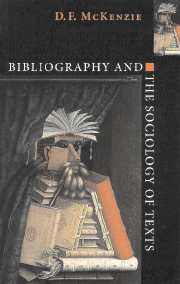1 - The book as an expressive form
Published online by Cambridge University Press: 22 September 2009
Summary
My purpose in these lectures – one I hope that might be thought fitting for an inaugural occasion – is simply to consider anew what bibliography is and how it relates to other disciplines. To begin that inquiry, I should like to recall a classic statement by Sir Walter Greg. It is this: ‘what the bibliographer is concerned with is pieces of paper or parchment covered with certain written or printed signs. With these signs he is concerned merely as arbitrary marks; their meaning is no business of his’. This definition of bibliography, or at least of ‘pure’ bibliography, is still widely accepted, and it remains in essence the basis of any claim that the procedures of bibliography are scientific.
A study by Mr Ross Atkinson supports that view by drawing on the work of the American semiotician, C. S. Peirce. It can be argued, for example, that the signs in a book, as a bibliographer must read them, are simply iconic or indexical. Briefly, iconic signs are those which involve similarity; they represent an object, much as a portrait represents the sitter. In enumerative bibliography, and even more so in descriptive, the entries are iconic. They represent the object they describe. Textual bibliography, too, may be said to be iconic because it seeks, as Mr Atkinson puts it, ‘to reproduce the Object with maximum precision in every detail’. In that way, enumerative, descriptive, and textual bibliography may be said to constitute a class of three referential sign systems.
- Type
- Chapter
- Information
- Bibliography and the Sociology of Texts , pp. 9 - 30Publisher: Cambridge University PressPrint publication year: 1999
- 1
- Cited by



